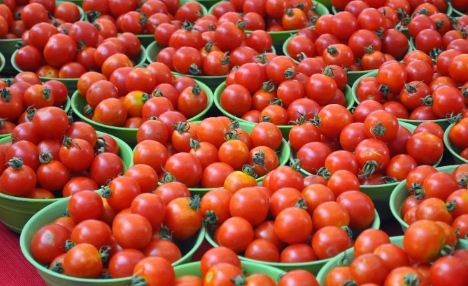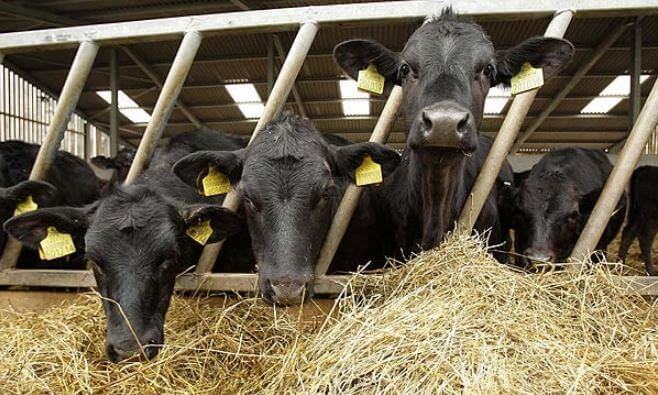Tomato farming is one agricultural sector that seems to have been neglected and left to only farmers in the northern part of Nigeria. However, people fail to see the profitability and potential in the tomato farming business.
Every year, tomato becomes very scarce, and most times, four tomato balls go as high as 500 Naira. This is a challenge that is caused by scarcity and high demand. Therefore, investing in tomato farming will help reduce this scarcity, thereby contributing to the nation’s economic growth while making profits from it.
Table of Contents
Is Tomato Farming Lucrative?
Nigeria is one of the highest importers of tomato paste products. This shows you how important tomato is to Nigeria’s hungry population. Over 500 million dollars is spent yearly on the importation of tomato products in Nigeria.
Considering the fact that about 70% of the world population makes use of tomatoes and their products shows you how lucrative tomato farming is.
Young people, investors, and businessmen are advised to go into tomato farming as it is very lucrative if done right. However, always consult the services of a consultant to guide you through.

This article was carefully written after a lot of research to provide you with steps on how to start a tomato farm business in Nigeria. Below is the step by step process:
- Land Acquisition.
- Land Preparation.
- Choose a particular tomato variety.
- Start tomato nursery.
- Transplanting to field.
- Weeding and Fumigation.
- Watering and Fertilizer Addition.
- Harvesting.
- Sales.
1. Land Acquisition
Acquire land in a good location. Tomato grows best in loose, well-drained soil. The land should have good drainage properties and should not be prone to flooding. Land should be well fenced and secured to prevent intruders into the farm and also to avoid theft. The planting location should not be far away from the market since tomato is a perishable product.
2. Land Preparation
Land preparation can be done using cutlass, hoe, or tractors. Trees and grasses should be cut to expose the soil to sunlight. Land can be allowed to mulch, and organic matters mixed with the soil to improve its nutrient composition.
If soil is acidic, apply lime to reduce the acidity. Tilling should be done to make the soil loose and easy to plant on. A good and healthy soil determines the yield of tomatoes. Soil should be rich in organic matter and can have a PH of 6 to 7.
3. Choose a particular tomato variety
Tomato has different variations, and one of the factors that determine your tomato yield is the variety planted. Select the best variety for your farm. Seed should be healthy and disease-free. There are so many varieties of tomatoes, some of which are:
- Adoration species.
- Big rainbow species.
- Dester species.
- Enchantment species.
- Juliet species.
- Azoychka species.
- Beef steak tomato species.
- Alicante species.
- Great white species, etc.
You can get recommendations from other tomatoes farmers to ascertain the best species to plant.
4. Start a tomato nursery
Tomatoes are best planted from the nursery to ensure a good yield. Plant your tomatoes in a nursery or pots and grow bags, but you will need a more intensive feeding regime due to the restricted root space.
Make sure the bags hold at least 40 liters and only plant 2 plants in a grow bag. These conditions are not ideal but may be the only option for a small garden. Use the best compost you can and feed with a generous amount of poultry manure pellets.
Wait till rainfall has gone and soil temperatures have warmed to about 60°F before setting tomatoes into the field.
5. Transplant to the field
Tomatoes are ready to be transplanted to the field two weeks after nursery care. Transplanting should be done carefully to avoid damage to tomato seedlings. Use a trowel to dig a hole about twice the size of the tomato seedling and its root ball; set the seedling into the ground at the same level as it grew in its nursery.
Make sure to cover the root ball entirely. To reduce transplant shock and hasten the establishment of seedlings, irrigate the newly-set transplant well with water. Spacing should be 45 by 30cm or 30 by 30cm for maximum production.
6. Weeding and Fumigation
Weeding should be done about two to three weeks after planting in the field. Be careful while weeding to avoid damaging the roots of tomatoes. The farm should be fumigation regularly to protect the tomato stands from rodents and pests.
Original pesticides and fumigants should be obtained to achieve an effective result. Some of the diseases that may affect tomato plants are:
- Bacterial Wilt: This is caused by bacteria and leads to rapid wilt of plant, brownish and yellowish ooze in the stem of the infected plant. It can be controlled by crop rotation, destroy all infected plant, plant disease-free varieties.
- Early blight: This disease is caused by fungi. It causes lesions on the stems, tissue around the spot turns yellowish. It can be controlled by using resistant varieties, encouraging crop rotation spacing plant to avoid touching.
- Tomato spotted wilt: This is caused by insects called thrips. It causes stunted growth in plants, dark spots on leaves, yellow spots on fruit. It can be managed by eliminating weeds in the garden, which might attract thrips, removing the old crop debris, and planting resistant varieties of tomato seeds.
7. Watering and Fertilizer Addition
After weeding, watering should be carried out on the farm to moisten the soil and allow tomato plants to flourish. Keep the soil evenly moist, not too wet, and not too dry. Too much water will drown the plants; too little water will stop fruit production.
During periods of drought, deep-water tomatoes once a week and slow soil moisture evaporation by mulching with aged compost or straw.
Fertilizer should also be added to plants at this stage. Use fertilizers that supply all the vital nutrients, which are nitrogen, potassium, and phosphorous. In the absence of fertilizer, you can apply the plants with organic manure such as cow dung, and compost. Fertilizer and manure addition allows plants to yield better fruits.
8. Harvesting
Tomato grows in batches and is best harvested in batches too. The first harvest is within three months of planting. Harvest time for tomatoes should ideally occur when the fruit is a mature green and then ripen off the vine.
Ideally, ripe tomatoes should be kept at room temperature on the counter away from sunlight. Ensure they’re in a single layer, not touching one another, and the stem side should be up.
9. Sales
Immediately after harvest, you can make arrangement to haul the tomato to the market for sales. You can sell your products at local food markets or sell to retailers, and other tomato vendors. Tomatoes are perishable goods and may not last long outside its storage facility.
Therefore, you can get cold room service and other storage facilities to preserve your tomatoes. Furthermore, you can consider processing the fresh tomatoes into tomato pastes and other useful products at home.
Conclusion
One good thing about the tomato business is that it continues to yield fruit whether you own a big or small farm. This means there is an opportunity for everyone to make money from this business, irrespective of their capacity.
Conclusively, tomato farming is a profitable business that has the potential to bring profits and returns on investment to the farmer or entrepreneur involved. This article is a comprehensive guide on what you need to know about tomato farming. Young people are advised to give a thought to this money bank that has been ignored over the years.






